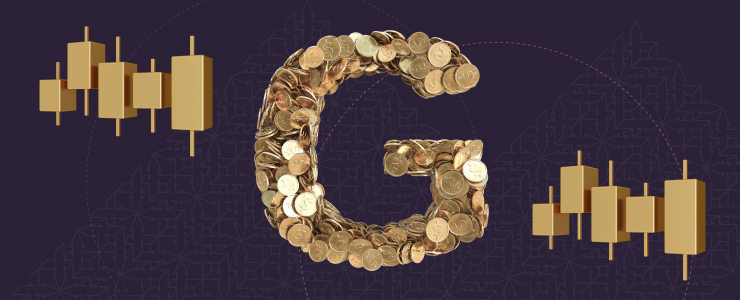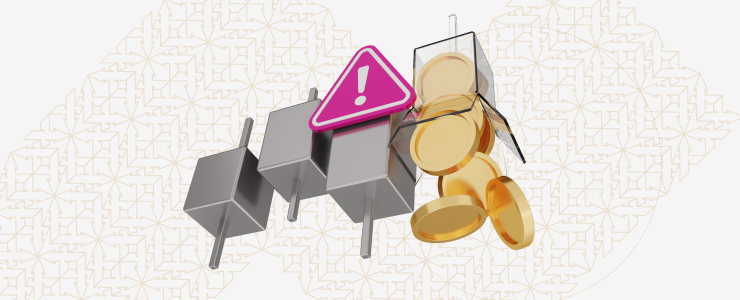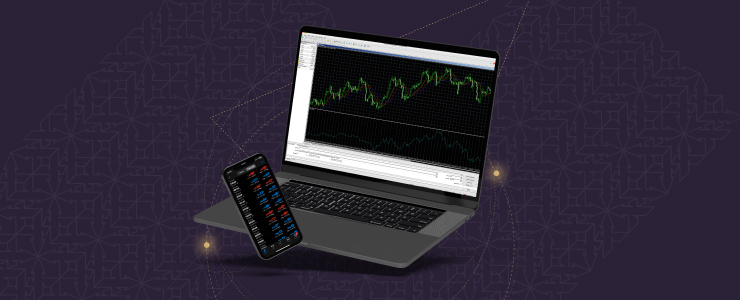Trading metals has always been a popular way to preserve one’s capital and ensure some possible financial security.
Gold, silver, platinum and palladium, have historically been the foundation of financial systems and symbols of wealth and status
Many traders turn to precious metals to secure their portfolios and protect their assets during market and economic fluctuations. Metals hold great value, and traders turn to them because of their inherent value, limited availability and practical applications as well as investments or jewellery.
But what should beginners know before diving into trading metals? Read on for a simple guide to help you understand the basics and key strategies for trading in metals.
Types of metals
There are different types of metals that traders can trade, typically grouped as precious or base metals. The most well-known precious metals are gold, silver, platinum and palladium while the main vase metals include copper, lead, nickel and zinc.
Precious metals
Precious metals are rare, naturally occurring metals with inherent value. They are resistant to rust, corrosion and tarnishing. The main precious, gold, silver, palladium and platinum are used in jewellery and have other various applications.
Throughout history, precious metals have been used for currency and jewellery. In modern times, metals like gold are also used in products like iPhones and computers. Some precious metals are considered safe investments during times of market uncertainty.

Base metals
Base metals are more common metals that naturally oxidise, corrode or tarnish. Examples include copper, lead, nickel and zinc. These metals are used in products like copper pipes and alloys such as nichrome (a mic of nickel and chronium).
Copper, for instance, is also used in sculptures, with iconic pieces like the Statue of Liberty turning green due to copper oxidation.
Which precious metals are available for trading?
The four main precious metals that are traded on a regular basis are palladium, silver, platinum, and gold. Beyond jewellery and their historical use currency, these metals have many applications in medicine, industry, electronics, and alloy production.
Gold
Gold has been used to create valuable items for thousands of years. Due to the fact that it conducts electricity, it’s found in jewellery, decorations, and even the computers and phones we use daily as well as in forex trading as a currency. Many traders see gold as a safe-haven asset during market uncertainty.
Its price is set daily, mainly influenced by market sentiment rather than supply and demand. This is because most of the gold available comes from existing stock rather than new mining production. The price drops when hoarders sell, and when they need to buy again, the new supply is quickly consumed, pushing the price of gold up.
The growing desire to hoard gold can be explained by several factors:
Financial instability: Gold is seen as a safe asset when money, banks, or political stability are uncertain.
Inflation: When returns from stocks, bonds or real estate are negative, people often turn to gold because it tends to keep its value.
War or political crises: During conflicts or political instability, people often buy gold to store their savings in a portable form, ready to be exchanged for essentials like food, shelter or safety.
Silver
Silver is a popular metal in industry because it is flexible, conducts electricity well, and has antibacterial properties. These qualities make it useful in many fields, including water filtration, dentistry and batteries.
The value of silver fluctuates between its perceived use as an industrial metal and as a value store, as compared to gold. Because of this reality, value fluctuations in this market are more random than the value fluctuations in the gold market.
The industrial demand/supply balance of the metal has an equally deep influence on the price of silver, even though it functionally acts essentially the same way as gold as a store of value. Recent developments have consistently caused that equation to change, including:
The arrival of the digital camera overshadowed silver’s previous dominance in photography.
The emergence of a broad middle class in the emergent market economies in the East triggered a phenomenal increase in demand for industrial commodities with silver inputs such as electrical appliances and medical equipment.
Silver’s characteristics ensured that the metal was the top choice among commodities ranging from electrical contacts to bearings.
Silver’s use in microcircuit applications, superconductor applications, and batteries.
Whether or to what degree these technologies will influence silver’s overall demand outside of investing is unknown. However, silver is not just used for the fashion industry or as an investment tool. Its value is decided based on its uses.

Platinum
Platinum is commonly used in jewellery and dental work. It is also widely used in alloys, like cobalt-platinum for making magnets. Additionally, some chemotherapy drugs for cancers like lymphoma, lung, testicular and ovarian cancer contain platinum.
Platinum trades continuously on international commodities markets, just like gold and silver. Because it is much rarer than gold, it frequently tends to be sold for a higher price during regular periods of market and political stability. In reality, much less metal is extracted from the earth each year.
Platinum’s price is mainly driven by demand from automotive catalysts, jewellery and industries like petroleum refining. Geopolitical issues, supply shortages, and demand shifts, such as car manufacturers using palladium instead of platinum, also affect prices. The metal is mined mainly in South Africa and Russia, increasing the potential for price manipulation. These factors make platinum the most volatile precious metal.
Palladium
Palladium, which has more industrial applications, is less popular than the three metals above. It is similar to platinum in structure, origin, and function. Over half of the world’s palladium is used in car catalytic converters, which help turn harmful gases like carbon monoxide into safer substances like nitrogen, carbon dioxide or water vapour.
What affects precious metal prices?
The prices of precious metals are mainly driven by supply and demand. More supply usually lowers prices, while higher demand pushes prices up.
Production disruptions can affect supply, as mining and refining processes are complex. For example, Mexico, China, and Peru produce nearly half of the world’s silver.
The value of the US dollar also impacts metal prices since they are traded in dollars. Additionally, investor sentiment plays a role. In times of uncertainty, traders often buy gold and silver for safety, while in stable periods, they may sell metals for riskier assets.

Should I trade metals or not?
Precious metals are a great way to protect against inflation. They have real value, don’t carry credit risk, and can’t be overproduced. They also act as a safeguard during financial, political or military instability.
From a trading point of view, precious metals don’t usually move in the same direction as stocks and bonds. This means that even a small amount in your portfolio can help reduce risk and volatility.
Final thoughts
Trading metals is a practical and efficient way to diversify your portfolio. To potentially succeed, you must first understand your objectives and risk tolerance. It is possible to use the volatility of precious metals to generate revenue. It can also result in losses, however, if left unchecked.
Disclaimer:This information is not considered investment advice or an investment recommendation, but instead a marketing communication.




